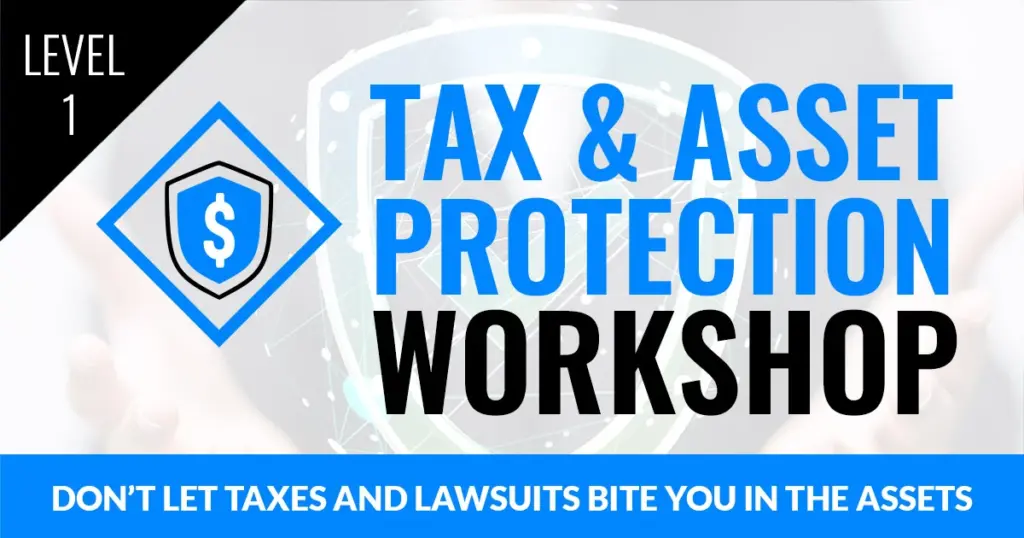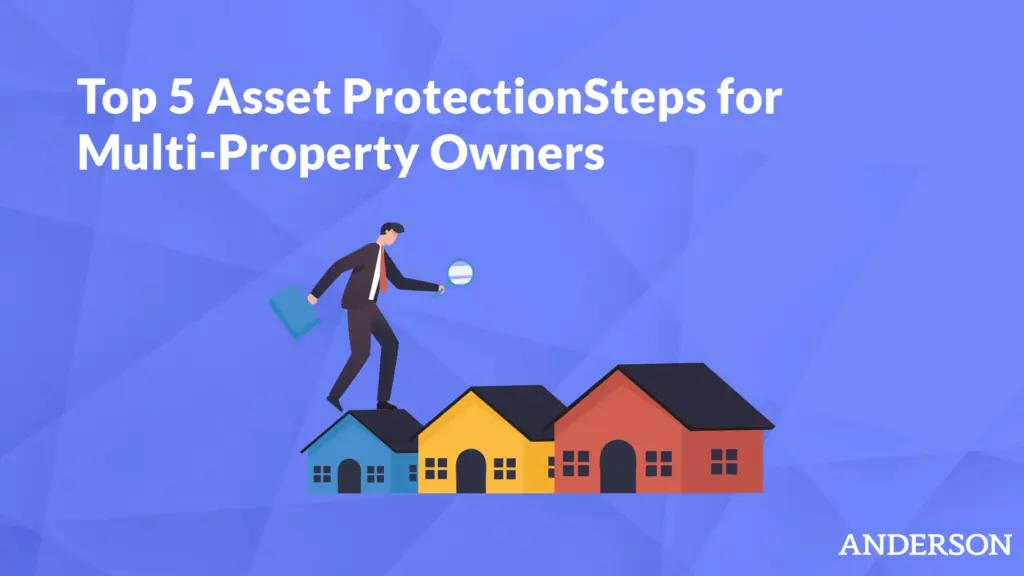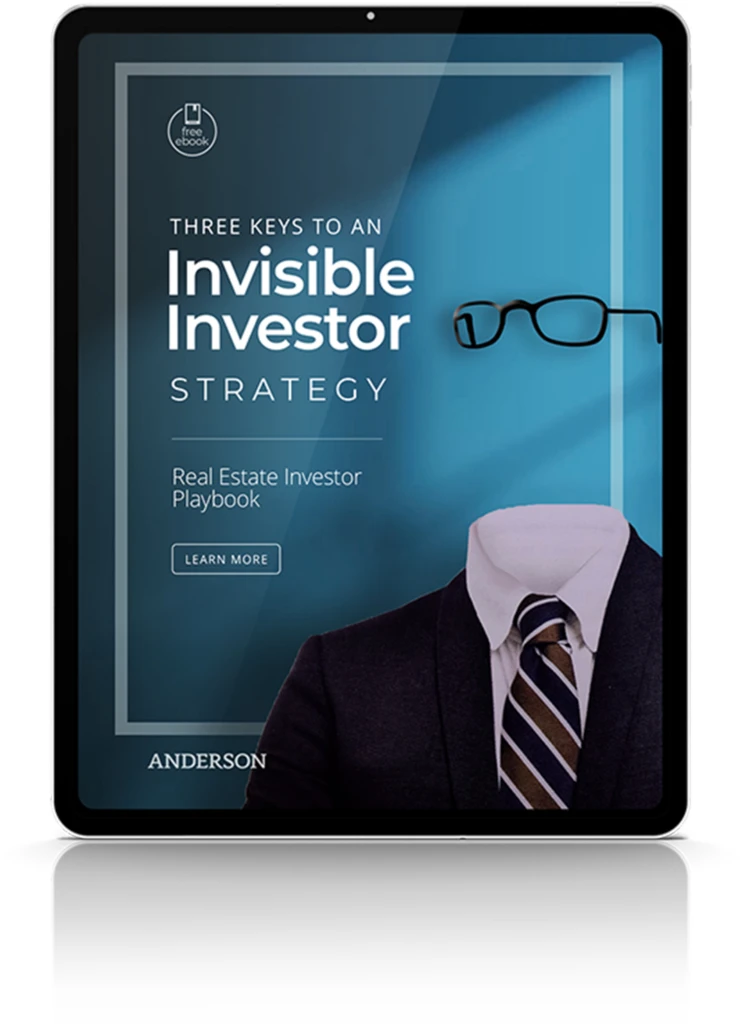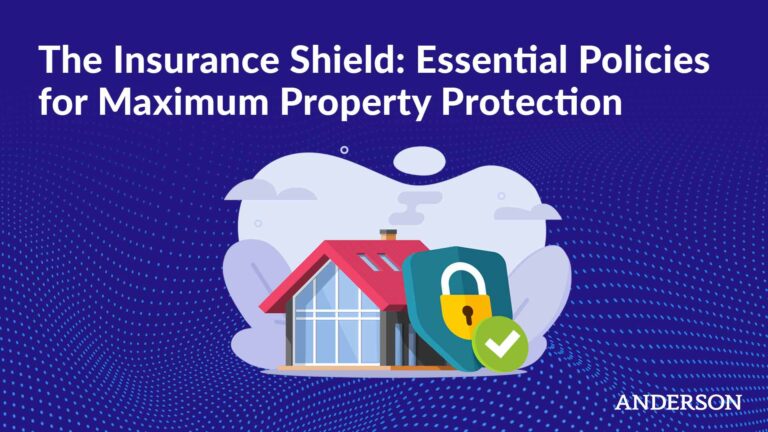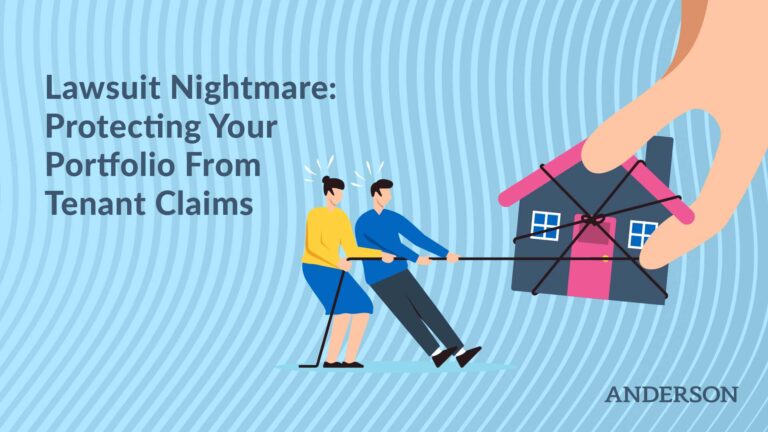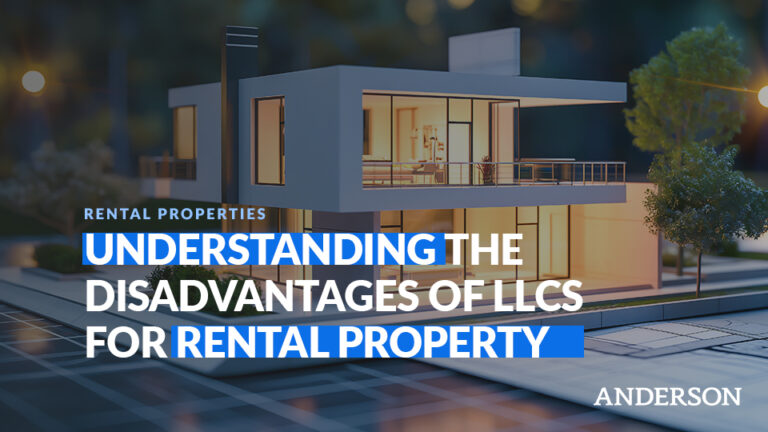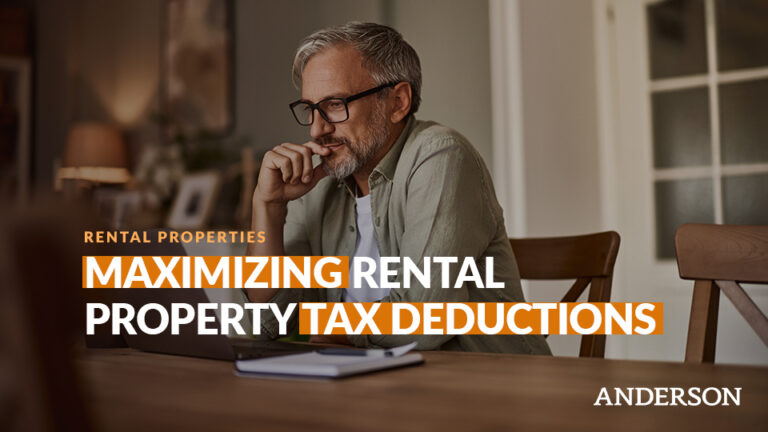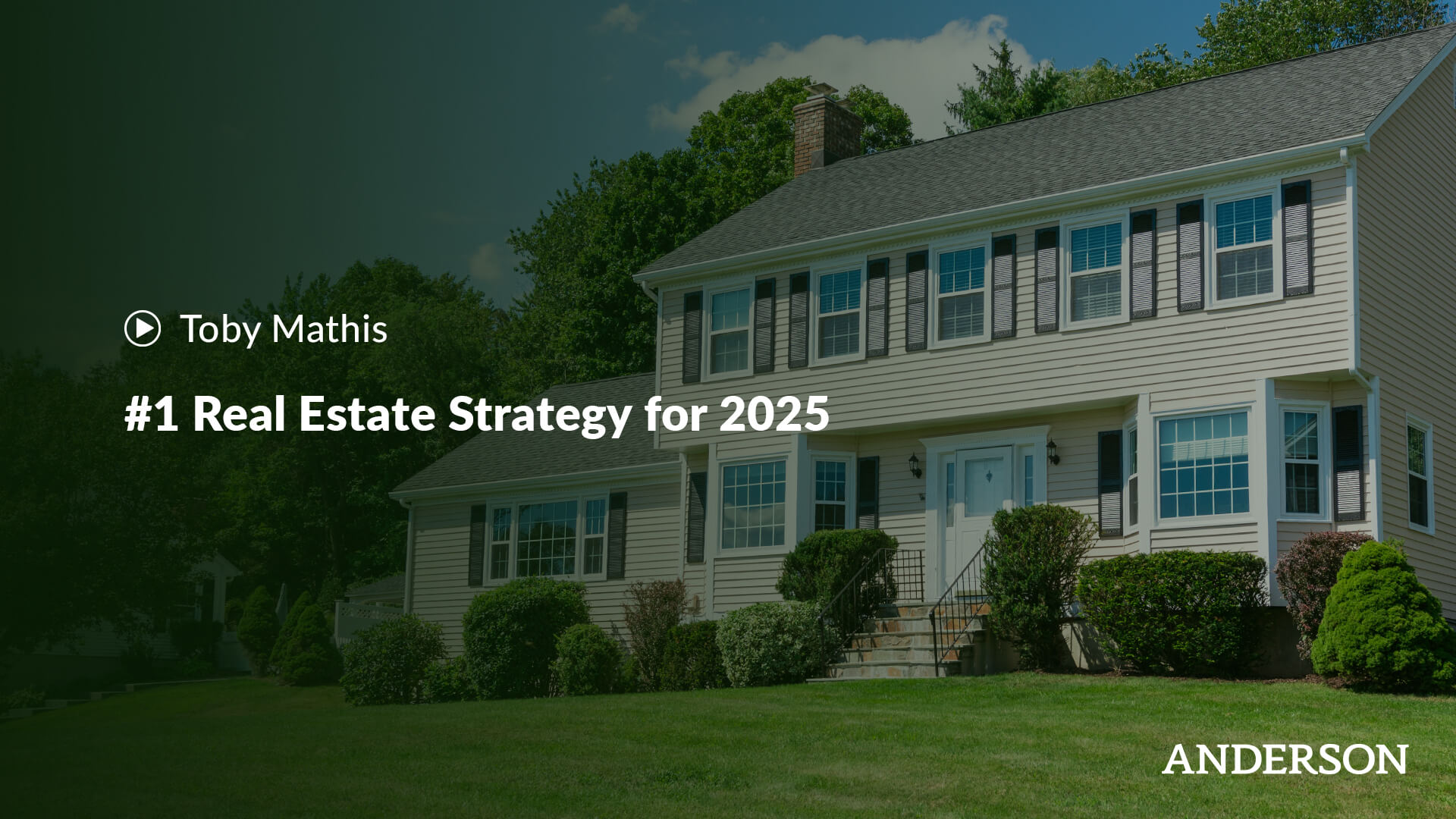

In this episode, Toby Mathis, Esq., of Anderson Business Advisors, chats with Atticus LeBlanc, CEO of PadSplit. Toby and Atticus discuss the innovative approach PadSplit is taking to address homelessness and provide affordable housing. They dive into troubling statistics about homelessness in 2024 and how rising home prices and interest rates are impacting the housing market. PadSplit’s model—offering multi-room rentals—provides a solution for both underserved communities and real estate investors, creating a two-sided marketplace. The conversation covers the operational benefits for landlords, the low turnover rates, and the impact PadSplit has on helping residents transition out of homelessness. Learn how this model offers affordable housing in 24-48 hours for under $300, while benefiting investors by reducing costs and increasing revenue. It’s a win-win for both society and your investment portfolio!
Highlights/Topics:
- Toby’s PadSplit experience, frightening stats on homelessness for 2024
- Increasing home prices, interest rates are not helping single-family residences
- PadSplit rooms are a great solution for the underserved, and for investors
- Reducing barriers to entry for the unhoused, revenue increases for landlords
- How PadSplit operates as a two-sided marketplace
- Different scenarios using PadSplit for multi-room home rentals
- Standard costs for a “turn” as a landlord, saving with PadSplit
- Early intervention for issues is easier with a PadSplit scenario
- Residents have thousands of options if they don’t care for the room
- What are the eviction rates with PadSplit?
- What percentage of residents move from unhoused situations? This is the “invisible working population’ – not people on the street with a cardboard sign.
- Residents can get a room within 24-48 hours, for under $300
- So something good for society, and something good for yourself
- Share this with investors you know
Resources:
Schedule Your FREE Consultation
Tax and Asset Protection Events
Full Episode Transcript:
Toby: What’s the number one strategy for real estate in 2025? You’re about to learn about it. I’m going to bring on Atticus LeBlanc, the CEO of PadSplit, and you’re going to learn about shared housing.
What it means is taking properties that you have right now and possibly converting them over into shared housing, where you can double the amount of income you make, but more importantly, serve people who are unserved right now.
Homelessness is up. We’re seeing affordability is at an all time low. What do we do as a society? You’re going to learn all about it. I’m going to just give you, before I introduce Atticus, one analogy.
I had a property in India. It was probably one of my worst-performing properties. I bought it for $17,000 years ago. I was renting it out for about $750–$800 a month. Every year I was having to change out that tenant and dump another $3000 in it to do the turn.
I said, this is the worst property I have. I’m going to make it into a pad split and see what the numbers look like after a year. I turned it into a three-bedroom, one-bath pad split. I get $200 a week, which is about $880 per month per room now.
I’m creating over $2500 a month in income off of that property. When you take out the management fees and the costs associated because they’re really low, it’s about $2000 cash flow a month on a property that I paid about $17,000 for.
To be straight up with you, when I converted it into a pad split, I furnished it, it was less than $20,000. I’m all in right around $40,000 on that property, and that’s the income that it’s producing.
Now, are you going to get the same thing? Maybe, maybe not. It depends on your community, but I’m just giving you that as one example. I took my worst performing single family resident and converted it into a pad split. That’s what happened to me. I can’t change it, and you really ought to take a look at that. Here we go. Enjoy this video.
Hey, guys. Toby Mathis here. Today, we’re going to go over the number one real estate strategy for 2025. I really believe in my bones that we have a major crisis on our hands with being completely underbuilt, unaffordability, and we saw a HUD report come out last week that says homelessness is up 18% in 2024.
Here we are in 2025. What are we going to do about it? I wanted to introduce you to Atticus, CEO over at PadSplit. I want to talk about how this is working, what it is, and how it’s solving the issue. First off, welcome Atticus.
Atticus: Thanks, Toby. Always a pleasure to be here and glad to be back again.
Toby: I just made a bold claim that it’s the number one strategy in 2025. Do you agree with that sentiment? If so, give us the reasons why you agree.
Atticus: Absolutely agree for two reasons: One, on the demand side, you have higher demand for affordable housing than you’ve ever had. That trend line hasn’t stopped for the last 20 years and it’s just gotten worse and worse.
Meanwhile, supply of new affordable housing continues to fall short over and over. You just have this latent demand for people who cannot afford or more importantly, cannot even access when you start thinking about upfront barriers to entry housing that is reasonable for their budgets.
The second thing on the investor side, you’ve got increasing home prices, you’ve got high interest rates. Your yields are just not there on single family rentals and in most cases, multifamily rentals as well.
Whereas on a relative basis, you’re increasing those yields 2x to 3x on average in a rent-by-the-room strategy compared to a traditional whole unit rental, whether that is a single family rentals or apartments. So you combine those two things. For me, it’s always been a no brainer. I’ve been doing this since 2009. I’ve just seen the demand increase time and time again.
Toby: Just to be really clear, PadSplit is basically shared housing, where somebody can rent by a room and a rental house. They can rent it by the week, right?
Atticus: Correct. We set up a minimum of three-month commitment, but there is some flexibility enabled there. Residents who actually become members of PadSplit the capacity to transfer their membership across different units.
They’ve got a lot of geographic, social, and economic mobility that was previously unheard of for them. They can move in. There’s no upfront deposit. We don’t even look at minimum credit scores, yet we’re still driving an effective collections rate around 98% right now. It’s never dropped below 97.5% in our history, largely because we’re bundling all inclusive weekly or per payday payments.
It’s really empowering for those users who have never had access to over 16,000 rentals across the country that are fully furnished and enable savings on average of $366 a month for people who are earning off around $30,000 a year. It’s been a great solution for those individuals and a great solution for investors who are looking to increase their cash flow.
Toby: Let’s talk about that for a second. I’ve done this before with shared housing, where I thought it was really rolling up three, four, five, or six years ago I think when we first started talking.
You could see the writing on the wall that we were underbuilt, housing permits were down, and you could see us running towards this wall if you’re paying attention when you weren’t listening to all the crap that was on TV and cable. There wasn’t a crash coming and everybody’s like, oh, the market’s going to… No, we’re underbuilt by about five million units.
You have this huge issue facing you as somebody who’s investing. Hey, I want to get a yield. I want to get a nice return. But on the same token, there’s BlackRock and all these big funds coming in there buying up rental houses that are your turnkey rental houses.
I love single family residences, duplexes, and fourplexes. I’m not saying negative things about that. I’m just saying that doesn’t solve the issue. The issue really becomes affordable housing.
Somebody cannot rent a house or an apartment nowadays. I’m in Las Vegas. It’s $1300 for one bedroom, one bath. A lot of people just can’t afford that. They can’t afford this huge deposit that you have to make, or they have to pass the credit and everything else, all these different tests, and they’re not able to get that. What happens is they end up unhoused, homeless, whatever you want to call it, sleeping on somebody’s couch, or looking for alternative means.
There are two things here. (1) As a landlord, what we’ve seen—this is my experience because we have folks, there are probably about 1000 units that I look at with my clients—their net operating income increases by about 100%. It literally doubles. I want to verify, so I’m going to ask you to verify what your data is from that.
(2) You’re providing housing with less of a hurdle for those folks who are struggling to get housing. Those are the two things. You’re doing a good thing for society, you’re solving a big issue, and at the same time as a bonus, and I’ll go over my precise situation here in a minute after I let you talk, that you’re seeing an increase in revenue to the landlord as well. Is that what you are seeing on your side?
Atticus: Absolutely. Consistently over the last several years, we’ve seen what we refer to as just 2x straight up increase in net operating income, and that is after our fees as a platform, after you pay a third party property manager assuming that you do. It is a true 2x increase in your net operating income after all expenses are accounted for, utilities, maintenance, everything.
Now in some cases, if you’re managing yourself, you’ll see that number go to 3x. It’s not at all uncommon in the right situations to see those types of numbers. That’s relative to what you would have been earning as a single family rental.
The other thing too, Toby, is a lot of these high cost markets, if you run a traditional single family rental or even multifamily apartment, you’re forced to bank on home price appreciation because your yield just is non existent. This gives you an additional buffer to still capture that home price appreciation in these accelerating markets, particularly like you see out west or in some cases in Florida, but still get some yield to cover your expenses in the event of maintenance emergencies, natural disaster, or whatever the case may be.
I really think of it not just as a real time cash flow benefit but also as a hedge against risk, which is not necessarily intuitive for a lot of folks, but we talked earlier. You see a significant decline in your overall turn costs when people move out, then move back in, and the downtime that you’re not collecting any revenue on that property.
Toby: I’ll go over real numbers on one of my properties that drive that point home. What is PadSplit first off so that people know what you do? Again, I think it’s the number one thing in 2025, period. I think that we have such a huge issue, and this is a solution. People are going to say, ADUs, and there are no shared house incomes. It is number one, period. What is it? How do they use it? How do they benefit from it?
Atticus: PadSplit is a two sided marketplace not unlike an Airbnb or an Uber, where we pair individuals who are looking for this type of housing, who need low barrier-to-entry housing. They’re almost always working full-time, but they need options that they can afford.
We take those individuals, provide access to private rooms in shared homes, typically. Not always shared home. Sometimes people have accessory dwelling units, garage apartments, or even studios that are on the platform, but then those are listed by third-party hosts, typically real estate investors, sometimes owner occupants as well. Sometimes folks who are looking to buy their first home need to have additional cover. But generally, it’s real estate investors who are looking to increase their return. So we sit in between those two parties.
There are three buckets of services that we provide, and we focus on the things that most owners either cannot do on their own or don’t want to do on their own. Consolidating all the demand generation, spending a tremendous amount of money on marketing and technology to get people into those rooms as quickly as possible. We will cover our cost in just the difference in time that it takes us to fill a room versus what it would take you to fill that same room using traditional channels like Furnished Finder, Facebook Marketplace, or what have you.
The second thing that we do is all of the payments, so all of the collections. We’re collecting those payments from users on a per payday basis or on a weekly basis because that is the most effective way to drive effective collections.
From an operating standpoint, that gets really onerous really quickly for a property manager or an owner, where in a six bedroom house (for instance) you’re collecting north of 25 payments per month on one house. We handle all of that aspect.
The last piece is 24/7 customer service. A lot of technology tools built around how do we make sure that roommates are getting along or if they’re not getting along, that we have outlets for them to go elsewhere and find the living environment that’s most appropriate for them, advising hosts on best practices, providing communication tools where they can message individual residents, entire house, their entire portfolio, take in maintenance requests, either through our in-house tool, which is covered in our cost, or using whatever outside property management software that they have. That’s effectively our range of services.
Toby: How much does it cost for someone? Again, I want to be very clear with this. You bring in PadSplit. A four bedroom house now becomes four individual units that are rented, and you’re renting them on a weekly basis. It might be a minimum of 90 days, but you’re getting paid on a weekly basis on that property.
PadSplit’s collecting everything. It’s putting the tenant in there. It’s doing everything. You’re pretty much hands-off when it comes to getting people in there.
Atticus: Certainly for getting people in there if you choose to be, our fee structure is such that if we’re sourcing that resident, then we’re billing you for sourcing that resident and then an ongoing fee of 8%. If you want to source your own resident, we give you full credit for that. You don’t get charged at all.
Let’s say your nephew needs a place to stay, he works at the local auto shop, and some buddies decide to move into your house. You’re not paying to source those leads that you’re getting independently, so you get full credit for those. At the end of the day, if we’re not providing value, we don’t expect to get any fee for it. You don’t pay unless you get paid.
Toby: Let’s use that as an example because some people think immediately, I have to buy houses, I have to buy them for cash, whatever. Could you do this with a lease so you could lease the house?
Let’s say your nephew goes and gets a four bedroom house, is on the lease, and then says, I’m going to bring in three roommates, you could use PadSplit for those roommates, and you could house hack. He’s either leasing the house or perhaps he’s buying it, whatever the case, and then it’s a weekly payment. Let’s say that they’re doing $200 a week. That’s not $800 a month. That’s $880 or something like that, $890 a month, right?
Atticus: 4.35 times the weekly payment.
Toby: Yeah. You get a little bit of juice there, right?
Atticus: Correct.
Toby: You could literally just run that through PadSplit, right?
Atticus: You could. We have a number of hosts who run an arbitrage model. The one caveat I would say is make sure whoever you are renting from understands what you were doing and that they’re okay with it. You never want to try to pull the wool over somebody’s eyes and run an arbitrage model without them knowing. They always find out. It’s better just to run it clean from the beginning. You could absolutely do that.
The other thing I would say is if you have a four-bedroom house, one of the major benefits of a rent-by-the-room model like PadSplit is let’s think about the formal dining room or a home office in that three or four-bedroom house.
In a traditional rental scenario, you’re never getting any additional income from renting that unit. The value is zero. Whereas when you’re renting by room, the conversion of a formal dining room or home office to a rentable bedroom is almost nothing.
Now all of a sudden, that space, because you’re renting that room, can generate that $880 per month. Lo and behold, your cash flow jumps considerably. Where there is more inefficient space, you now have the capacity to rent that space and drive your net income while also addressing the lack of affordable housing options in the market.
Toby: Is that about average? You’re able to get about $200? Do you guys have an average, or do you track an average of what it is per week?
Atticus: Per room per week? Yeah, it’s probably $190 or so weekly right now on the average. Huge variation. A room in Miami is way different than a room in Atlanta or Jacksonville. A room in Denver is going to be way different than one in Houston.
I always encourage hosts to think about it on a relative basis. Look at whatever the apartment rents are in that local market or in a zip code even, and figure that for a studio or one bedroom apartment, your pricing on a furnished room is going to be somewhere around 60% or 70% of that cost.
Toby: I want to go back to something you mentioned about there’s a downtime. When you’re a regular landlord, you have something called a turn. When a tenant is out and now you have to repaint, redo the carpet, and stuff like that, I always think it’s about $3000 for a single family home in a typical situation. Does that same thing occur with a pad split?
Atticus: Not at all. No. It’s a great story too, Toby. I started rent-by-the-room in 2009. I started buying a bunch of houses, primarily single family rentals in early 2008, and then bought apartments as well. We were buying commercial. I ended up in this rent-by-the-room scenario in 2009.
From 2008 to 2016 really, I was comparing P&Ls across all these different asset classes. One of the things that I noticed was that our rent-by-the-room houses just beat the pants off of our SFRs on a cash flow basis, particularly when you looked over a longer period of time, for precisely that reason.
You think you’re making great revenue on a monthly basis in a single family rental. Then lo and behold, someone’s lived there four years. Long tenure, you think, okay, this is great, got a long term tenant, and they’re going to move out.
Maybe it’s $3000. In some cases it’s $10,000, $20,000. The first pad split prototype that I converted in 2017, I had a $46,000 insurance claim, Toby, because the house was that torn up. Forget about any revenue that you had, any profit that goes out the window. You actually lost money over that period of time. Whereas in a rent-by-the-room scenario, with PadSplit, you have one room to turn.
For our owners, the average cost of turning an individual room is $81. You’re not touching the kitchen, typically. You’re not touching the bathrooms. You’re not touching most of those common areas. You’re converting a furnished room.
Worst case scenario, you’ve got to replace the bed, mattress, and replace everything in that room. It’s $1000 or less, and you still have revenue from every other room in the house that’s covering that cost.
You never have the true vacancy loss that you would if you were turning that entire unit and then running the risk of vandalism, somebody coming in and stealing your appliances, or just squatting in the property. Some huge advantages there that are outside of just traditional cash flow comparisons.
Toby: If somebody’s out there watching this that’s already in a single family, give me your horror stories down in the comments. Tell me about your favorite one. We don’t have one.
Atticus: I’ve got plenty, Toby. I’ve chosen to relegate most of them to my far distant memory. I need shock therapy to bring some of those back up, but I still keep a couple of top-of-mind that are particularly interesting.
Toby: It’s always the law of averages. I always tell people, if you have one rental, it could be a really bad year if you have that tenant.
Atticus: It’s actually a great thing to bring up though, Toby. A lot of folks assume, oh, well, you’ve got multiple strangers sharing a house together. That sounds like an absolute nightmare. My nightmares are far worse from single family rentals and multifamily rentals than they are from pad splits for a pretty straightforward reason.
The good news, bad news about pad split is I now have visibility inside that home 24 hours a day, 7 days a week, 365 days a year, which means that my ability for early intervention to know when something is about to go wrong is dramatically higher. Whereas in a single family or multifamily rental scenario, my visibility as a landlord or property manager ends at the front door.
Let’s say maybe I filed for eviction on a tenant. There’s no way that I am getting in that front door unless the house is on fire, the water’s out, or something.
If I have an individual room resident who is under eviction, I still have access to the house. I’m still sending cleaners out there. I’m still sending maintenance people all the time. I have five other people or more depending on how many people are sharing and renting rooms that are telling me, hey, this person is breaking the rules or bringing guests over when they shouldn’t be, et cetera. I have the capacity to do something about it.
It does mean that there’s potentially more work to be done on the front end. But in most cases, it’s stuff that I should be doing already or stuff that I am incentivized to do as an owner to make sure that my property is well-maintained.
You don’t really see those nightmare scenarios get out of control nearly as frequently in a rent-by-the-room scenario as you do in a traditional rental scenario.
Let’s assume you’ve got, God forbid, some domestic abuse that’s happening inside a property. No one’s calling their property manager to say, oh, someone’s beating me up inside this home, where they’re renting as a tenant.
Whereas if there’s any form of violence, yelling, or anything, you know about it in a rent-by-the-room scenario. You can intervene and tell that person, hey, this is not working out. Either you need to move on or you’re going to end up under eviction.
Toby: You can move somebody. If there are roommates that just aren’t getting along with each other, you can just move them to a different unit. You just say, go to this house over here.
Atticus: A lot of times, they will move independently. That’s one of the most important advantages for PadSplit for residents. We move people in with no showings. You don’t have to meet people out there to show them the property. You don’t have to worry about some vendor who lets people into the property when it’s vacant, and they can potentially move in and squat.
You’re moving people in, they’re booking, they’re paying, and they’re moving in after the fact. What that means is, we have to give them an outlet in the event that they move in, and they’re in a room that they don’t like.
They have the capacity to transfer to thousands of different options in the event that they move in, and they really don’t want to live with that roommate in the property.
As an owner, you don’t want to trap them in that situation. It’s a traditional fight or flight response. You want to allow them to move out and de-escalate, whatever that situation happens to be. In a lot of cases, Toby, they’re moving out on their own.
Let’s assume that maybe they just really like cooking with garlic at 1:00 AM in the morning and it’s irritating the rest of the residents, it’s much easier for you to approach them as a host in that scenario to go move on to a different unit where everybody loves garlic or something, or everybody stays out.
Toby: Does your eviction rate show that too? Do you guys have a really, really low eviction rate as a result?
Atticus: Definitely. I encourage hosts to always think about PadSplit or rent-by-the-room relative to other options in their local markets. There was a Wall Street Journal article about Phoenix recently and how they were blaming institutional investors. I don’t know if it was necessarily institutional investors or it was just the market in general, but they were talking about a 16% eviction rate on single family rentals in Phoenix.
We have a bunch of units in Phoenix as well. Our eviction rate is 0.1% across all 16,500 units. That’s eviction status, not necessarily eviction filing. Somebody could just move out even when they’re in eviction status, and you don’t ever have to actually file on them. Across the entire portfolio, it’s 1. 3%, which is far lower than what you would expect certainly for this demographic, but then most single family or even class C, B multifamily rentals.
Toby: It’s a fraction of what it is in the single family market. I love the single family market. I’m not bashing on that.
Atticus: We got a bunch as well.
Toby: Yeah, but double your income and feed people who really need housing with housing. In fact, just as an aside, I don’t know if you track this data, but how many of your folks come from the unhoused or from the homeless area that actually join in?
Atticus: We do a survey every year of our existing residents. We know, for instance, fresh off the presses, 8.3% of our residents in PadSplit—keep in mind, these are folks who generally have full time jobs—are moving directly out of an unsheltered situation. And 16% are moving out of either transitional housing or an extended stay motel into PadSplit. You’ve got another 30% that are living with family, often sleeping on somebody’s sofa, that are moving in as well.
People think of homelessness as like, oh, I see that person on the street with a cardboard sign. What you don’t see is that’s the tip of the iceberg. What you’re running into in most markets across America is this invisible population who are working. You see them every day, but they are not the people that you think.
The cashier at your grocery store, the TSA agent at the airport, the security guard at your local shopping center, and in many cases, teachers. We have a great story from a teacher in Austin, made national news. He was living out of his car.
I think most of America just doesn’t realize how deep this problem is and how few the options are. Another quick stat is one third of the entire rental population of the United States are one- or two-person households that also earn less than $35,000 a year. Meaning they don’t qualify.
Forget about can afford. They don’t qualify to get into a $1000-a-month apartment. If you look at whatever city you happen to be in, you realize pretty quickly, oh, wait, I don’t see any $1000-a-month apartments available or very, very few compared to the one-third of the rental population that needs them.
Toby: You’re providing the unhoused with a step up, a transition, because they’ll never be able to come up with even the deposit. Just think about it. I don’t know how many of you guys have run across that way.
You try to get an apartment or something. They want money ahead of time, sometimes you’re waiting weeks. I’ve known people that were in the hotels trying to find a place, were on their buddy’s couch trying to find a place. There’s just not a lot of housing.
Here, how long would it take them to get into a unit if they can like, hey, I do a 90-day. It sounds like I could transfer it around. Like, hey, if I can get a secure place, locked door, bed, the things that I need, my own room, basically better than a hotel, still a place to cook and all that stuff, how quickly can they get into a pad split?
Atticus:: Twenty-four to 48 hours. It is really, really fast. To be able to get in, you were mentioning upfront deposits for an apartment. Typically for an apartment, even a cheap one, you need to come up with around $3000 just to move in. For us, it’s under $300.
The idea is based on a number of studies that have been done over the years, showing that 40% of Americans don’t have $400 to be able to spend on an emergency expense. What do they do? How on earth can that person come up with $3000? It’s going to take them a long time to build up that type of savings.
If we can remain below that $400 average, then we’re going to be an accessible option for those people when nothing else is available. It’s why you see so many people living full-time in extended stay motels, even when those motels are significantly more expensive than an apartment, because they can access them, they can pay that first week, and they end up trapped in that cycle of just having to spend all of their money on that on that motel.
Toby: There’s also instability if you don’t have a job, that you’re bouncing around or you’re in an area, and you can’t do a year lease. A lot of these places get six months to a year, so how do you pull the trigger on that? You don’t know if you’re going to be there. Maybe you’re going to be there just for a few months, and you don’t want to make that annual commitment. Or you’re coming in on a work project and you’re going to be there for a shorter period of time, then it’s just too much.
Atticus: And it’s unknown. Most, if not all property managers in America, separate out utilities and furniture from rent. Your pay doesn’t change when the heating bill goes up in the wintertime. We were just talking about Atlanta. It’s 24 degrees right here right now.
For most of that population, they’re not earning more just because it’s cold outside, even though their heating bill is significantly higher than it would otherwise be, or it’s hotter in the summer. For us, because utilities are included, they know exactly how much they need to pay, which is a huge, huge aspect of this model.
Toby: Atticus, I really appreciate it. For those folks that are listening out there, please put your comments in, and just look at this. You’re doubling on average. My experience, looking at tax returns, people can’t lie to me. Atticus, it seems like your numbers back this up too, it doubles your NOI, sometimes triples your NOI on the property. You’re solving an issue.
We had an 18% increase according to HUD of homelessness. Here’s a large chunk of those folks who are now able to get housed. You’re actually to house the unhoused. You do good for society. You do good for yourself. This is why I think it’s the number one strategy for 2025. I hope people take a look at PadSplit. Go check them out.
For those of you guys who are investors, I offer this quite often on my videos, but if you type in FREE BOOK down below, I’ll send you a copy of Infinity Investing. This fits really well with those strategies that we teach on the real estate side. Just type in FREE BOOK down in the comments.
We’ll send you a link for a free PDF of Infinity Investing. It was a best-selling book, but it’ll show you how to invest. Padsplit fits perfectly in there, and we’ll show you exactly through our system, how you can access and build up a portfolio of these types of homes and do two things, benefit yourself, benefit society, help those folks that are out there that are really struggling because God knows, it’s getting worse. It’s not getting better. It is something that we really need to do something about in 2025.
Thanks again, Atticus.
Atticus: Awesome. Thank you, Toby. Appreciate the opportunity.
